Question
Four of the following five are alike in a certain way
and hence form a group. Which of the following one that does not belong to the group? Read the following information carefully and answer the questions given below. Seven persons A, E, F, M, N, K and W are attending seven different exams on different subjects viz., Reasoning, Quantitative, English, General awareness, Agriculture, Hindi and Computer on different days of the same week starts from Monday to Sunday. The given information is not necessary in the same order. Some of them are male and some of them are female persons. W attends the exam immediately after the one who attends the General awareness exam and she does not attend the Agriculture exam. Three persons attends the exams between the one who attends Quantitative exam and A and both of them does not attend the exam on first or last day of the week. E, she attends the exam immediately before the one who attends Quantitative exam. As many persons attend the exams before W is same as after the one who attends the Agriculture exam. W does not attend the exam on last day of the week. Only one person attends the exam between K and the one who attends Reasoning exam. The one who attends the Reasoning exam is not a female person. More than two persons attend the exams between F and the one who attends the Computer exam. A and the one who attends Hindi exam belongs to the same gender. F does not attend the Hindi exam. The one who attends the exam on last day and on the Tuesday are does not belong to the same gender. K attend the exam immediately before his brother M attends the exam. The persons attend the exams immediately before and after A are does not belong to the same genderSolution
Three persons attends the exams between the one who attends Quantitative exam and A and both of them does not attend the exam on first or last day of the week. E, she attends the exam immediately before the one who attends Quantitative exam. 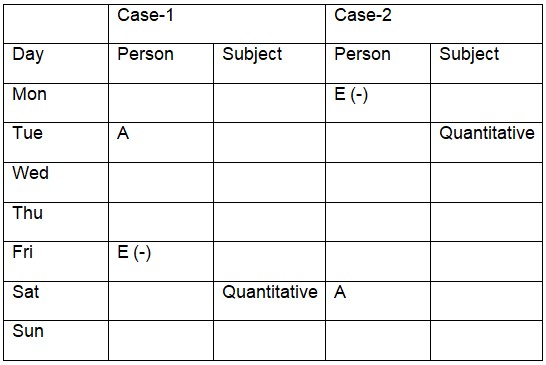 W attends the exam immediately after the one who attends the General awareness exam and she does not attend the Agriculture exam. As many persons attend the exams before W is same as after the one who attends the Agriculture exam. W does not attend the exam on last day of the week.
W attends the exam immediately after the one who attends the General awareness exam and she does not attend the Agriculture exam. As many persons attend the exams before W is same as after the one who attends the Agriculture exam. W does not attend the exam on last day of the week. 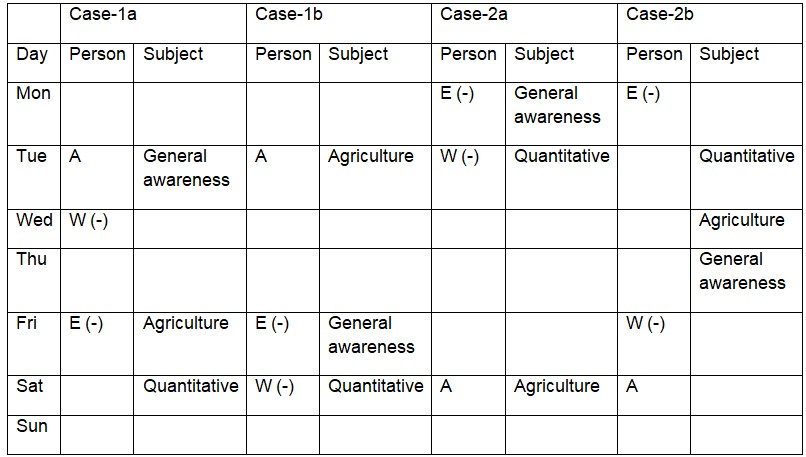 K attend the exam immediately before his brother M attends the exam. Only one person attends the exam between K and the one who attends Reasoning exam. The one who attends the Reasoning exam is not a female person. So, Case-2(b) will be dropped this is because the person who attends reasoning is a male person we can’t fix reasoning for female candidates.
K attend the exam immediately before his brother M attends the exam. Only one person attends the exam between K and the one who attends Reasoning exam. The one who attends the Reasoning exam is not a female person. So, Case-2(b) will be dropped this is because the person who attends reasoning is a male person we can’t fix reasoning for female candidates. 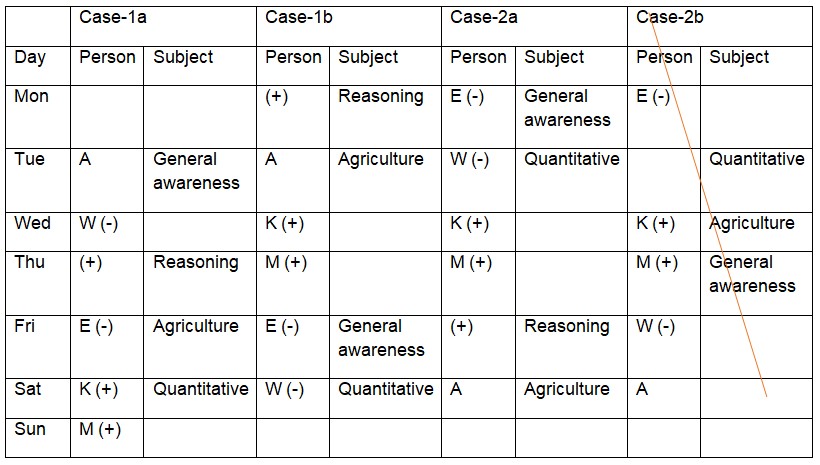 The persons attend the exams immediately before and after A are does not belong to the same gender. So, Case-1(b) will be dropped. More than two persons attend the exams between F and the one who attends the Computer exam.
The persons attend the exams immediately before and after A are does not belong to the same gender. So, Case-1(b) will be dropped. More than two persons attend the exams between F and the one who attends the Computer exam. 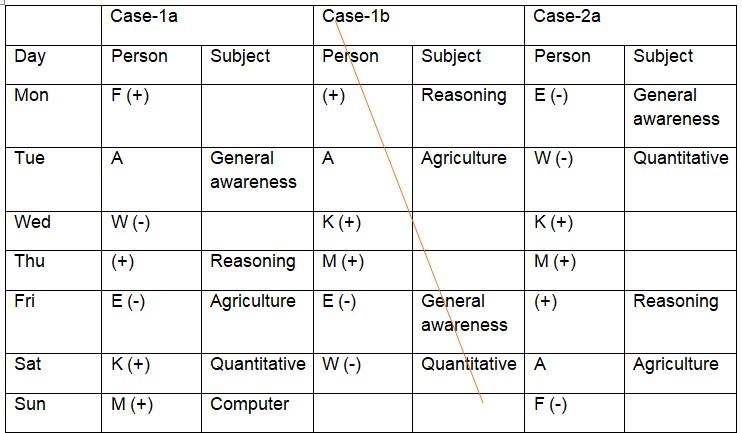 A and the one who attends Hindi exam belongs to the same gender. F does not attend the Hindi exam. The one who attends the exam on last day and on the Tuesday are does not belong to the same gender. So, Case-2(a) will be dropped.
A and the one who attends Hindi exam belongs to the same gender. F does not attend the Hindi exam. The one who attends the exam on last day and on the Tuesday are does not belong to the same gender. So, Case-2(a) will be dropped. 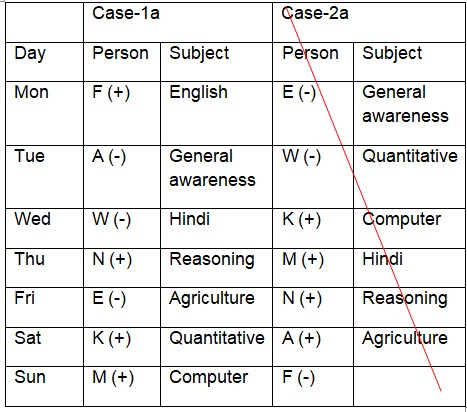 So final arrangement-
So final arrangement- 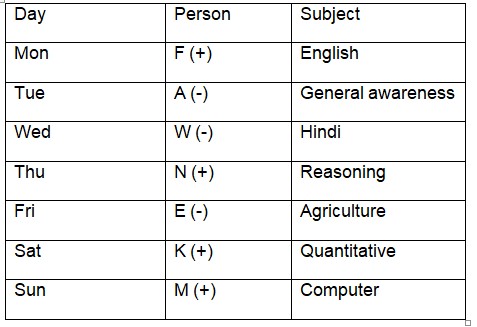
Who is the only Prime Minister who never faced the parliament during his tenure?
What is the monthly wage ceiling specified under Section 4(1) for working out the maximum amount of compensation, after the amendment made in 1995?
Which of the following is NOT included in the subject matter of the Concurrent List related to social security?
The price of a product is first reduced by 15% and then increased by 25%. If the final price is ₹690, then find the original cost price.
According to “The bonus Payment Act 1965” what is the definition of “Employee”?
For which branch(es) of the dairy product company was the average production for the given 4 years the minimum?
Which of the following statements is/are correct in regards to Amrit kaal?
1.Nirmala Sitharaman presents ‘the first budget of Amrit Kaal’.
In a school of 50 students, the number of boys and girls is in the ratio of 4:1. The boys have an average score of 38, while the girls have an average s...
Who among the following was not part of the group of 'no-changers' in the Congress Party?
Which two numbers should be interchanged to make the given equation correct?
7 × 8 + 9 − 6 ÷ 3 = 59
Relevant for Exams:


